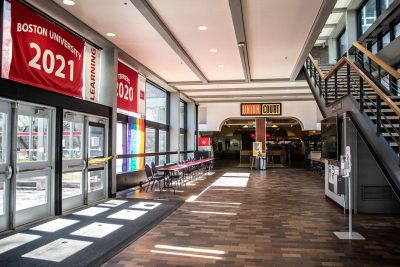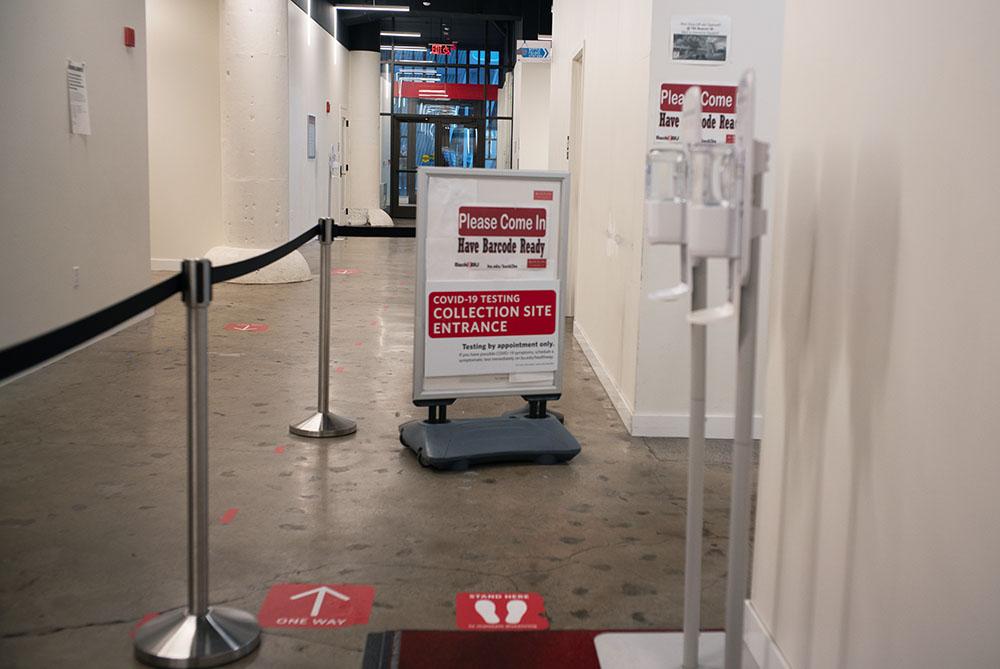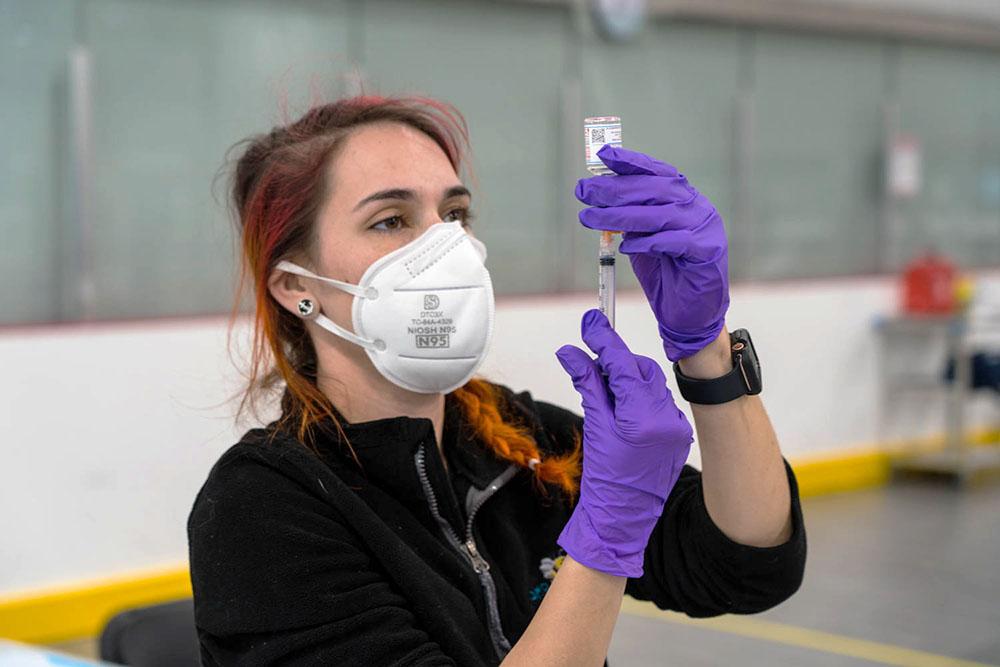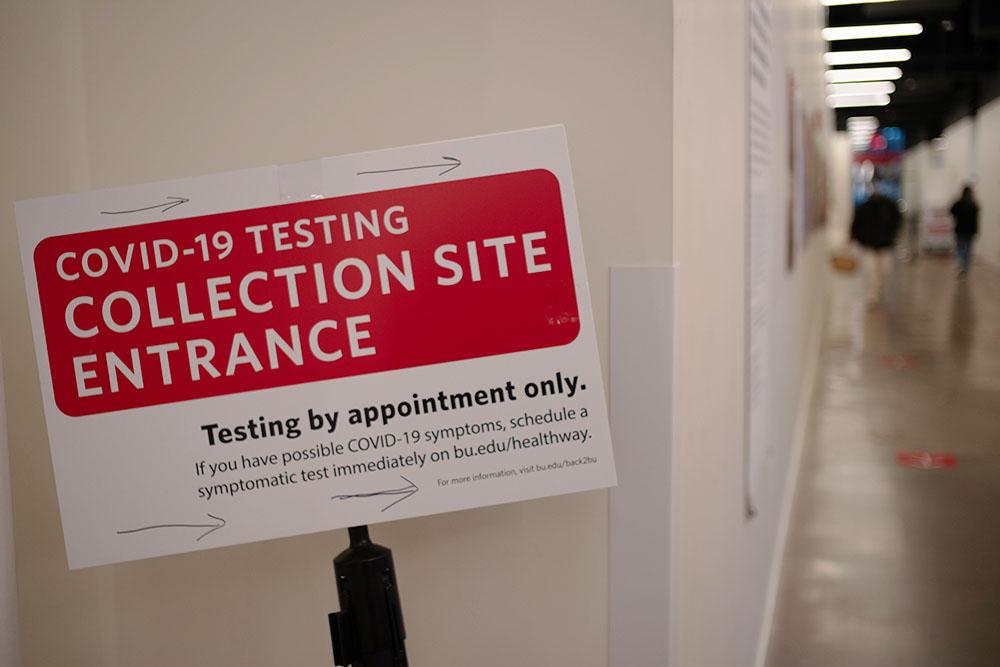To help ensure its classrooms adhere to social distancing guidelines this Fall, Boston University has decided to move some classes into the George Sherman Union, according to Christine Paal, assistant vice president and university registrar.

“When six foot physical distancing is applied to a classroom, for example, fewer seats are generally available in any one space,” Paal wrote in an email. “Therefore, additional spaces are needed for faculty to offer classes for graduate and undergraduate programs.”
Rooms and areas within the GSU basement, such as the GSU Alley, in addition to ballrooms and lounges in the facility, will be converted to classrooms this semester.
BU’s Medical Campus is also working to apply social distancing to its classrooms, according to Paal. She wrote that following COVID-19 guidelines is essential to ensuring a smooth Fall 2020.
“Physical distancing, requiring face coverings in public spaces, enhanced cleaning, high quality [heating, ventilation and air-conditioning] systems, and signage stipulating traffic patterns in buildings,” Paal wrote, “all contribute to a safer environment for the BU community.”
BU Spokesperson Colin Riley wrote in an email that classroom reassignments are an annual occurrence, but this year proves especially unique.
“As part of de-densifying spaces for the return to in-person instruction,” Riley wrote, “the University identified appropriate spaces, including the GSU, that could accommodate our needs.”
He added that the Office of the University Registrar is working on reassignments.
Paal wrote that requests for these are made through the first week of the semester and that BU works diligently to consider desired reassignments.
The University will also be making use of the Tsai Performance Center in the College of Arts and Sciences. While classes are held in this space each semester, this semester will see unprecedented additions to the roster.
Computer science professor Perry Donham wrote in an email that two of his large-lecture courses — Introduction to Computer Science and Software Engineering, with 220 students and 120 students respectively — were reassigned mid-August. Intro to Comp Sci will now take place in Tsai and Software Engineering was moved to the Kilachand Lounge.
Donham said the reassignment was a necessary move for students attending class in person.
“We’d normally run CS101 in a room like COM-101, which has 240 seats, but it has an LfA capacity of only 33,” Donham wrote. “If students rotate in-person courses, they’d be in the live lecture just once every three or four weeks, which isn’t really acceptable.”
With the new classrooms, Donham wrote, students in Intro to Comp Sci can attend the lecture once out of the two times it meets per week.
The new rooms are equipped with the same technology required for instruction via both Zoom and in-person attendance, Donham wrote. Teaching himself how to teach effectively for an in-person and virtual audience simultaneously, he added, will prove a greater challenge than adapting to a new space.
Donham also wrote that he declined the assistance of the University’s classroom moderators, who work with instructors in live classes to help participants troubleshoot technology issues.
“I’ve decided that I can’t morally ask a student to participate in something that is a potential health risk and so have declined moderators for all of my courses,” he wrote. “I’m having this internal discussion about the lab component of my courses, too. Can I really ask a [teaching fellow] to spend three to four hours in a small classroom helping students with programming problems?”
He is still working out the kinks in his in-person teaching plans, Donham wrote, but he is not worried about course material at this point.
Paal wrote that the newly coordinated classrooms will still be available to use for other purposes. The Registrar’s Schedules Department will collaborate with the Dean of Students Office and members of the Events and Conferences team to organize any gatherings in the GSU or otherwise.
“Rooms used for classes,” Paal wrote, “may be available to be booked for events, as space permits and within the policies developed for events.”
Those who partook into the decision-making process include the Registrar; Campus Planning and Operations; Learning and Events Technology Services; the Provost’s Office; and faculty in BU’s schools and colleges.
Questrom School of Business Senior Eric Liu is in Donham’s Intro to Comp Sci class that was moved to Tsai. He said he was surprised the lecture was meeting in person at all based on class size but thinks it’s nice students will have the opportunity to attend more often.
“I know that a lot of students don’t do as well when it’s online so obviously it’s great to have that option,” Liu said.
Grace Ferguson, a junior in the College of Communication, is taking History of American Foreign Relations since 1898 — taught by David Mayers — which was moved to Room 300 in the GSU Alley. She said utilizing the GSU demonstrates innovation.
“I actually think it’s a really cool move for BU to put classes in the GSU,” Ferguson said. “At a time like this, you really have to get creative with the classrooms that you’re picking.”
Despite the room being bigger to accommodate more people while social distancing, Ferguson said the increase in student capacity may incentivize her to remain remote. She said she “appreciate[s]” that BU is seeking to “provide the in-person experience for more people,” but that allowing more people to congregate indoors is not ideal.
“For this class, because the room is now a much larger room with more people, I think I might just take it online,” Ferguson said. “Whereas, if they were moving to a larger room but not changing the number of people in rotation, or maybe it was more like three rotations, I think I’d feel differently.”
























































































































